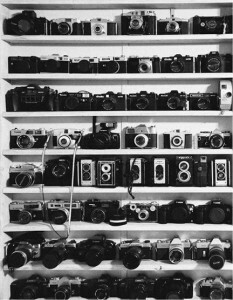 Outfits for family photo sessions should be coordinated and comfortable. Layering is a great idea, too!
What should clients wear for their photo session?
The number one rule of deciding what to wear for a photo session is to be comfortable. If the subjects you are photographing are not comfortable, that will show in your photos. Here are a few guidelines that will help your subjects pick out the perfect outfit.
Outfits for family photo sessions should be coordinated and comfortable. Layering is a great idea, too!
What should clients wear for their photo session?
The number one rule of deciding what to wear for a photo session is to be comfortable. If the subjects you are photographing are not comfortable, that will show in your photos. Here are a few guidelines that will help your subjects pick out the perfect outfit.
- Focus on seasons. What subjects wear should be appropriate to the season (if outdoors) or to the season the photograph is for (if you are taking a Christmas portrait in October, clients should wear Christmas-themed clothes, not Halloween!)
- Location and theme. Think about the backdrop you want for your photographs; if clients will be photographed in a place that is mostly one color or has a strong theme, they should dress so that they stand out, but don’t clash.
- The family’s style. A portrait should capture the style of a family, so it’s usually recommended that the family wears clothes they already own, rather than going out and buying all new just for the sake of a photo. If the family is going to print a large photo (on canvas or photo paper), then their wardrobe should be an accent to the decor in their home.
 Not all cameras are created equal, but a modern DSLR can produce images with quality rivaling or exceeding earlier 35mm film cameras. It really comes down to personal preference.
Not all cameras are created equal, but a modern DSLR can produce images with quality rivaling or exceeding earlier 35mm film cameras. It really comes down to personal preference.Photo courtesy Ali Thompson via Pinterest Is digital photography finally the same quality as film photography? This is somewhat of a trick question, since it depends heavily on the cameras being compared. If you are thinking of DSLRs vs. 35mm SLRs using equivalent lenses, most DSLRs will produce images of the same quality. However, a film SLR will produce better quality images than most consumer digital cameras for snapshots. Large format film cameras like the Polaroid 20x24, which use plates rather than film, generally do have better image quality than even high-end DSLRs, but are difficult to use and expensive to maintain. There are, however, large-format DSLRs that approach the quality of a professional photographer’s large format film camera. Do I have to copyright my photography? Copyright is a complicated area of the law and if you intend to sell your photography it is a good idea to read the law (which can be accessed from the U.S. Copyright Office or an attorney specializing in copyright). However, you should know that as a photographer you do not have to pay for a copyright to your images. By virtue of you creating the image, the rights to that image belong to you unless you transfer or release those rights. An additional few tips to help you keep your copyright might be handy:
- Put a copyright warning on materials you use to add to your protection (i.e., Copyright 2013 Jane Smith)
- Consider watermarking any images you put on the internet
- Be aware that some big name brands and architecture are aggressive about their copyrights, so you cannot copyright and sell their images (more on frequent defenders of this stripe courtesy Shutterstock.com)
 All kidding aside, copyrighting is a serious concern. Do your research to make sure of your rights and know what to do to transfer or release those rights.
All kidding aside, copyrighting is a serious concern. Do your research to make sure of your rights and know what to do to transfer or release those rights.Photo courtesy Scott Liddell. Where should I go to print my photography? The difference between a one hour photo lab and a professional photo lab can’t be fully appreciated until you compare the same photo and size printed from each side by side. What’s more, the prices for professional photo printing are directly comparable to what most one-hour labs charge. For your digital photography, a professional printer can’t be replaced. From color correction to the final print of archival quality that will last for generations, a professional photo printing service can give you higher quality with more options than any mini-department or pop-up shop.
